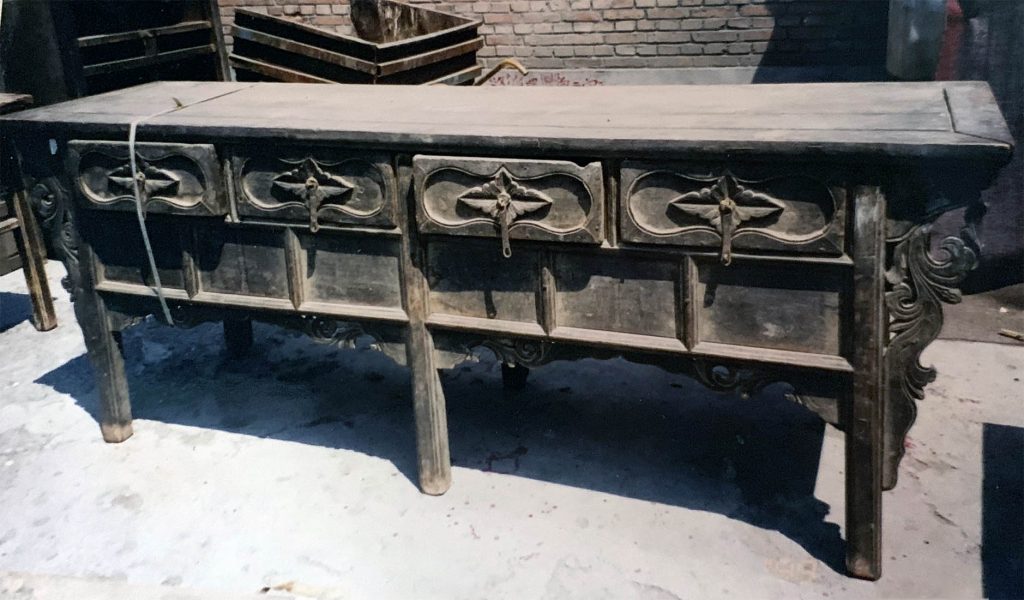
13th/14th Century; extinct Sophora or Huai wood, pine and other soft wood for secondary framework; all-original and in excellent condition; Shanxi.
This coffer is exceptional because not many Chinese furniture made of the Sophora, a valued wood during the Yuan (1279-1368) and Ming (1368-1644) dynasties, survived to reach the West in good condition today. The Sophora, better known in China phonetically as “Huai”, was a wood of choice for furniture-making because it is very dense, resistant to insects, deterioration, and warping. A further benefit of using this wood is that it has such beautiful deep grain patterns the finished products did not need painted decorations.
A coffer is a table or chest with hidden drawers. It existed at a time when banks were not in existence, so it was a piece of furniture important to someone of the elite class to have a place to hide some of his precious personal belongings. During that ancient period of China, the society was dominated by the scholar class which pursued writing, painting, and collecting pottery and vases in their leisure time. An exceptional-looking table like this coffer would have belonged to an elite scholar who could comfortably paint and write on its wide surface, and to show off his valuable collection of pottery and vases on special occasions.
This table has a textured floating panel at the top, which is attached to the frame members with traditional mitered, mortise-and-tenon joints. Since the table is so long, the body is supported by three legs in front and three in the back. Long tenons from the legs penetrate through to the surface of the top to give good support. Each drawer front is carved with a beaded ribbon-shaped recessed section inside which is carved in relief a pointed-leaf motif, with a tongue iron pull in its center that can be locked to a ring on a lower frame stretcher. The hidden space is revealed only when the drawer is pulled out. Subdividing frame members are molded to sharp ridges. A long apron in front is separated by the middle leg into two sections, with each section pieced with a scrolling grass motif. An elaborate openwork carving of scrolling-leaf design is done on the long spandrel going down each side of the front legs. The table has recessed side panels, with a stretcher spanning the legs below it. It is a great accomplishment for craftsmen of such ancient period to be able to take such an extremely long and structurally complicated table and hand-crafted it into something of such grace, balance, and majesty. This coffer is all-original.
This coffer was found in Shanxi and brought to Beijing in the 1990s by a Chinese antiques expert trained by an old master in furniture-making from Shanxi. The piece showed some grain-pattern cracks on the top panel and with much of its dark lacquer faded to a grayish tint of old age and neglect. It is characteristic of the Sophora to have some cracks when first cut but, when dried, become very stable and not warp. The faded color was restored to its archaic lustrous beauty by cleaning and an application of the ‘lac’ from the lacquer trees that flourish in Shanxi. This lac not only restored the luster to the wood but also helped to preserve it.
As this Sophora wood is extinct long ago and few furniture of such ancient age managed to survive to reach the markets today, not many antique furniture dealers now recognize the rarity and value of Sophora furniture. It represents a genre of Chinese folk furniture, important in telling how people from different societies of that era lived. In that context, Sophora furniture plays a valuable part in the development of Chinese cultural history.
